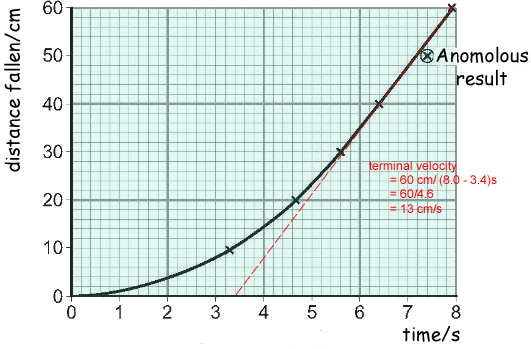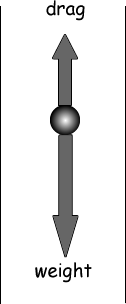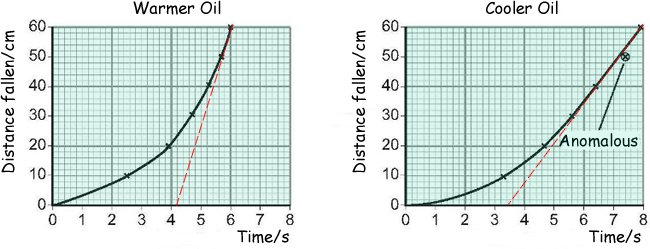GCSE Questions: Forces
Q2. Lucy investigated the change in speed of a ball-bearing as it fell through a tube filled with oil.
She measured the time it took to fall to different distance points, each time measuring the distance from the top of the oil.

(a) What is likely to be the main source of experimental error in this experiment?
Starting or stopping the stopwatch - timing measurements (especially over small distances). 
[1 mark]
(b) Here are Lucy's results, plotted on a graph. She has identified one of her results as being 'anomalous'.

She believed that this was due to the stopwatch being started incorrectly for that reading.
She should have started the stop watch at the exact time she released the ball bearing.
(i) Did the anomoly occur because she pressed the stopwatch button before she released the ball bearing or because she pressed it after it had been released?
Before - the time measurement was larger than it should have been, so she must have pressed the stopwatch button before the ball bearing was released, increasing the timing measurement.
[1 mark]
(ii) During the first four seconds what happens to the speed of the ball bearing?
The speed of the ball bearing increases - it accelerates. 
[1 mark]
(iii) The graph shows that the ball-bearing reaches terminal velocity. Calculate the terminal velocity from the graph.
terminal velocity = gradient of the straight portion of the graph 
= 60 cm/ (8.0 - 3.4)s
= 60 cm /4.6 s
= 13  cm/s
cm/s 
[3 marks]
(iv) The diagram shows the two forces acting on the ball-bearing as it falls through the oil.

Explain, in terms of these two forces why the ball-bearing reaches terminal velocity.
The weight of the ball bearing is constant. The drag force increases with the speed of the ball bearing.  When the weight is greater than drag there is a net downward force. This makes the ball-bearing accelerate.
When the weight is greater than drag there is a net downward force. This makes the ball-bearing accelerate.  As it accelerates the drag force will increase, reducing the net downward force. When the drag force equals the weight there will be no net force and therefore no acceleration
As it accelerates the drag force will increase, reducing the net downward force. When the drag force equals the weight there will be no net force and therefore no acceleration  and the ball will travel at a constant speed - terminal velocity.
and the ball will travel at a constant speed - terminal velocity.
[3 marks]
(c) The experiment was repeated using warmer oil and cooler oil.

After falling 40 cm is the drag force on the ball-bearing in the warmer oil greater or weaker than when it had fallen 40 cm in the cooler oil.
You can see, from the dashed lines on the graph, that in the cooler oil the ball-bearing had already reached terminal velocity when it had fallen 40 cm,  but that in the warmer oil terminal velocity had not been reached.
but that in the warmer oil terminal velocity had not been reached.  At terminal velocity drag is a maximum value, equal to the weight.
At terminal velocity drag is a maximum value, equal to the weight.
Therefore the drag force is less in the warmer oil. 
[3 marks]
[12 Marks TOTAL]










